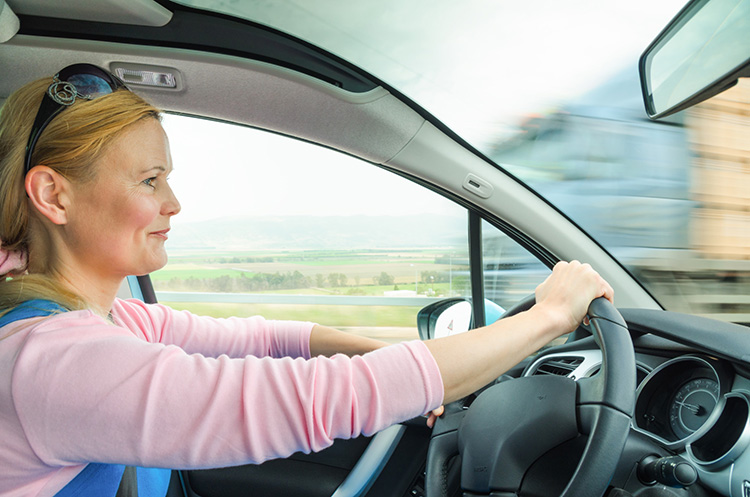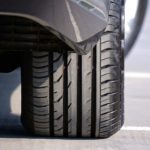The NTHSA statistical report for the first 9 months of 2021 showed that over 31,000 people died in car accidents. This was a 12% increase in fatalities when compared to the previous year. According to the Fatality Analysis Reporting System history, this was the highest fatality rate since 2006. Most of our cars have the latest safety features. These include a backup camera, blind-spot detector, lane departure warning system, and more. What’s surprising is that traffic deaths and injuries are surging. What’s more, is that the aftermath of a car accident is quite an ordeal. If you are lucky enough to survive it, you are likely to deal with various issues. These includelife-altering injuries, loss of wages, and overwhelming medical bills. The truth is that some car crashes are unpreventable. However, many more accidents are avoidable.
Distracted Driving
According to the Centers for Disease Control and Prevention, over 3,000 people died in accidents involving distracted driving in 2019. Another 424,000 people sustained serious injuries in such crashes. When driving, simple distractions can lead to fatal crashes. Distracted driving accidents result from the driver losing focus due to various activities. The driver could either be eating something, texting, or talking on the phone. These distractions are either manual, visual, or cognitive. What they have in common is that they force drivers to take their eyes off the road for a moment.
How to Avoid Distracted Driving
If you must take a call when driving, use the hands-free mode to avoid interfering with your concentration on the road. Never try to read an email or eat while driving. Otherwise, you may get involved in an accident.
Rear-End Collision
Rear-end collisions are arguably the most prevalent car crashes on our roads. The 2018 Traffic Safety Facts report recorded over 2 million rear-end collisions. A rear-end accident occurs when a vehicle hits the automobile that it is following from behind. In most cases, these collisions will happen at stop signs, a red light, or in a traffic jam. According to reports from the National Transportation Board, 80% of fatalities arising from rear-end collisions are preventable.
How to Avoid Rear-Impact Collisions
Maintain a reasonable distance between your car and the vehicle in front of you. If possible, buy a car with a front crash prevention system. Such a vehicle will brake automatically whenever there is an obstacle in front of you. Make sure your brake lights are functioning properly at all times. The objective is to ensure that the driver behind you is getting a signal whenever you slow down. As you approach a stop sign or a red light, start braking slowly from afar. Also, pay attention to the prevailing conditions on the road. For instance, if there are children nearby, slow down.
Side-Impact Collisions
Most side-impact collisions are fatal because they occur when cars are moving at high speeds. A side impact accident happens when one vehicle strikes another on the side. Usually, this type of accident will occur at an intersection. What makes these accidents dangerous is that there is little space to absorb the resulting impact. Occupants of the vehicle on the receiving end tend to sustain serious injuries. The common consequences of side-impact or T-bone accidents include injuries to the pelvis, arms, head, and chest.
How to Avoid Side-Impact Collisions
Exercise maximum caution when crossing an intersection. Part of this should include looking on the right and the left side. The goal is to ensure the intersection is clear and safe for you to cross. Be aware of heavy trucks crossing the intersection. Unlike smaller vehicles, trucks will take a long time to slow down in case of any emergency. And if you are right in the middle of an intersection, they may not stop in time to avoid hitting you. Be extra careful when driving such that you will not be the cause of a side-impact collision. Also, being alert may help you anticipate a T-bone accident and avoid it.
Speeding Accident
Sometimes, drivers are in a hurry. As a result, they disregard speed limits, and speeding leads to crashes. In 2019, over 9,400 people lost their lives due to speeding. The dangers of speeding are grim to the driver, passengers, and other road users. When you are speeding, the chances of losing control of the vehicle are high. If anything happens in front of you, you will struggle to stop the car. A crash resulting from a speeding vehicle causes severe injuries due to a greater impact.
How to Avoid Speeding Accidents
No matter how late you are, drive within the stipulated speeds. Always be on the lookout for the speed limits whenever you are on the road and adhere to them. Watch the behavior of the driver behind you; if they seem to be speeding, allow them to overtake you.
Blind-Spot Accidents
A blind spot is an area of the road that you cannot see with your rearview mirror, side-view mirror, or through your vehicles windshield. Blind-spot accidents happen when a driver tries to overtake or change lanes while driving through a blind spot. Usually, the driver will make the decision based on a hunch instead of vision. This leads to colliding with other vehicles.
How to Avoid Blind-Spot Crashes
If you find yourself in a blind spot, stay in your lane and do not attempt to overtake. Also, obey the traffic signs.
Head-On Crashes
A head-on collision occurs when the front ends of two cars traveling in different directions hit each other. Most head-on crashes are horrific because one or both vehicles involved are usually at a high speed. Compared to other accidents on this list, head-on collisions are less common. However, they account for a significant number of road accident fatalities.
Some injuries resulting from head-on crashes include brain injuries, spinal injuries, broken bones, and sometimes paralysis.
How to Avoid Head-On Crashes
Defensive driving can help you avoid head crashes. The first precaution is to ensure that you are not crossing the centerline of the road. When you cross the centerline, you enter into the oncoming vehicles territory. And this increases the chances of the car in front hitting your car.
Paying attention to the “Do not enter” and “Wrong Way” road signs can also help you avoid a head-on accident. Observing the edge lines and the centerline color lets you know if you are driving in the right direction.
Parked“Car Collisions and Backup Camera
Parking lots may seem to be the least likely areas for accidents to happen. Yet, thousands of accidents take place in the car parking area. What’s more, is that the people involved may sustain injuries or even die. It might be hard to fathom being killed by a car in a parking lot crash. Vehicles in parking areas typically move at a slow speed. However, a car can back up on a pedestrian and even run them over.
Parked car accidents are common because most drivers are relaxed in a parking lot. They do not anticipate such occurrences. Additionally, some drivers throw caution out the window while competing for parking spots. In some cases, this ends tragically.
How to Avoid Parked-Car Collisions
Use the backup camera when reversing your car. Do not park in a crowded parking lot if there is an alternative. If there is no other choice, at least look for a less busy area of the parking lot.
Avoid parking your vehicle too close to the parking line. Aim to park at the center of the space you choose. In doing so, you protect your vehicle from getting hit by other cars. Also, park street-smart. You can achieve this by avoiding driveways, tricky turns, and busy intersections. Otherwise, other drivers may accidentally swipe your car.
What to do When You are a Common Car Accident Victim?

There are many ways to respond to a car accident. First off, stop your vehicle and stay at the scene. Failing to stop regardless of who caused the accidents is a punishable offense.
Next, turn off your car to avoid a potential fire hazard. Try to calm down and check if you have any injuries that would need immediate attention from the doctor. If the injuries are minor, you still need to take note of them in case there is a court case later. Report every injury you may have sustained to the police.
For serious injuries, do not move. Ask for help or call the emergency number if you can manage. It is also crucial to do so if you suspect the person who caused the accident is intoxicated.
After an accident, your memory might let you down due to the shock. If possible, take pictures of the scene while it is still fresh. Record the date and time of the accident. In case of a missing road sign or damaged road, try to capture that in your data collection process. This information will come in handy in case of a court case.
Have you Been Involved in an Accident?
Avoiding an accident can be difficult no matter how hard you try. For example, some drivers have a backup camera but still back up into a pedestrian. If you are a victim of any type of car accident, and you feel the fault is not yours, you deserve a settlement. Auto insurance companies may deny your claim or pay you a small settlement. We can help you prove your case and get the settlement you deserve to get your life back on track. Contact us today for the best legal representation.


 While there is no hard and fast stopping distance to maintain between vehicles, Virginia law does include a section defining a fine you may encounter on the roadways called ‘following too closely’ the
While there is no hard and fast stopping distance to maintain between vehicles, Virginia law does include a section defining a fine you may encounter on the roadways called ‘following too closely’ the  Whiplash is a fairly common injury that occurs when a car is rear-ended and the passengers heads quickly jerk forward and back.
Whiplash is a fairly common injury that occurs when a car is rear-ended and the passengers heads quickly jerk forward and back. When the average 3,600-pound automobile suddenly meets an 18-wheeler weighing as much as 80,000 pounds and traveling at a speed of 60 miles per hour, enormous damage and injury are inevitable. Walking away from the accident can sometimes feel like a victory in itself, but it is important to keep several things in mind after youve been injured in a collision:
When the average 3,600-pound automobile suddenly meets an 18-wheeler weighing as much as 80,000 pounds and traveling at a speed of 60 miles per hour, enormous damage and injury are inevitable. Walking away from the accident can sometimes feel like a victory in itself, but it is important to keep several things in mind after youve been injured in a collision: